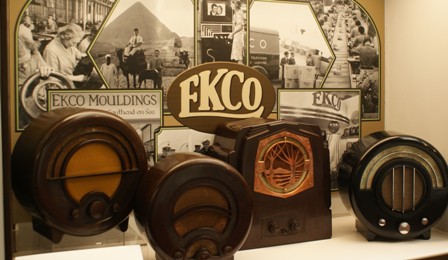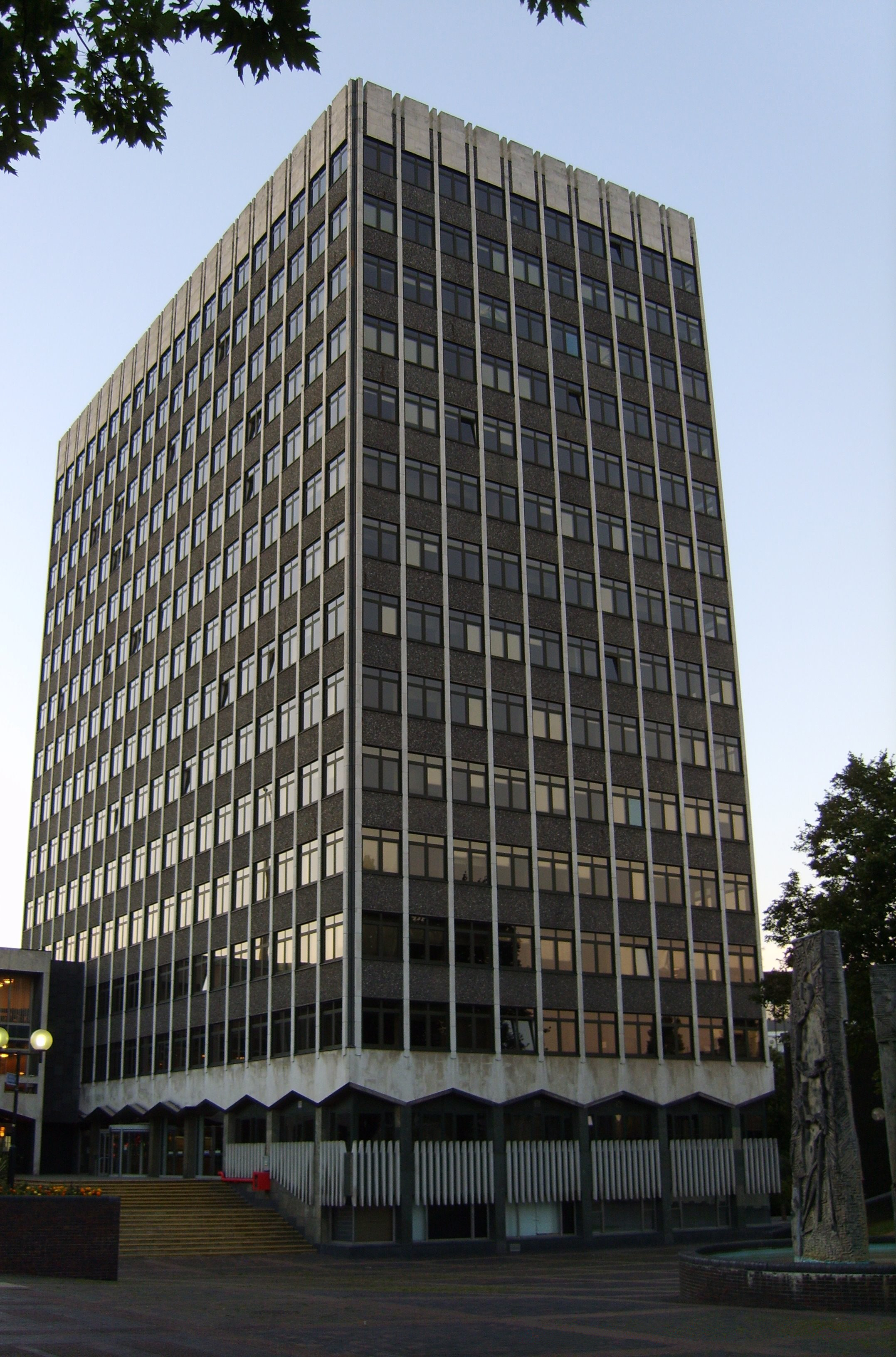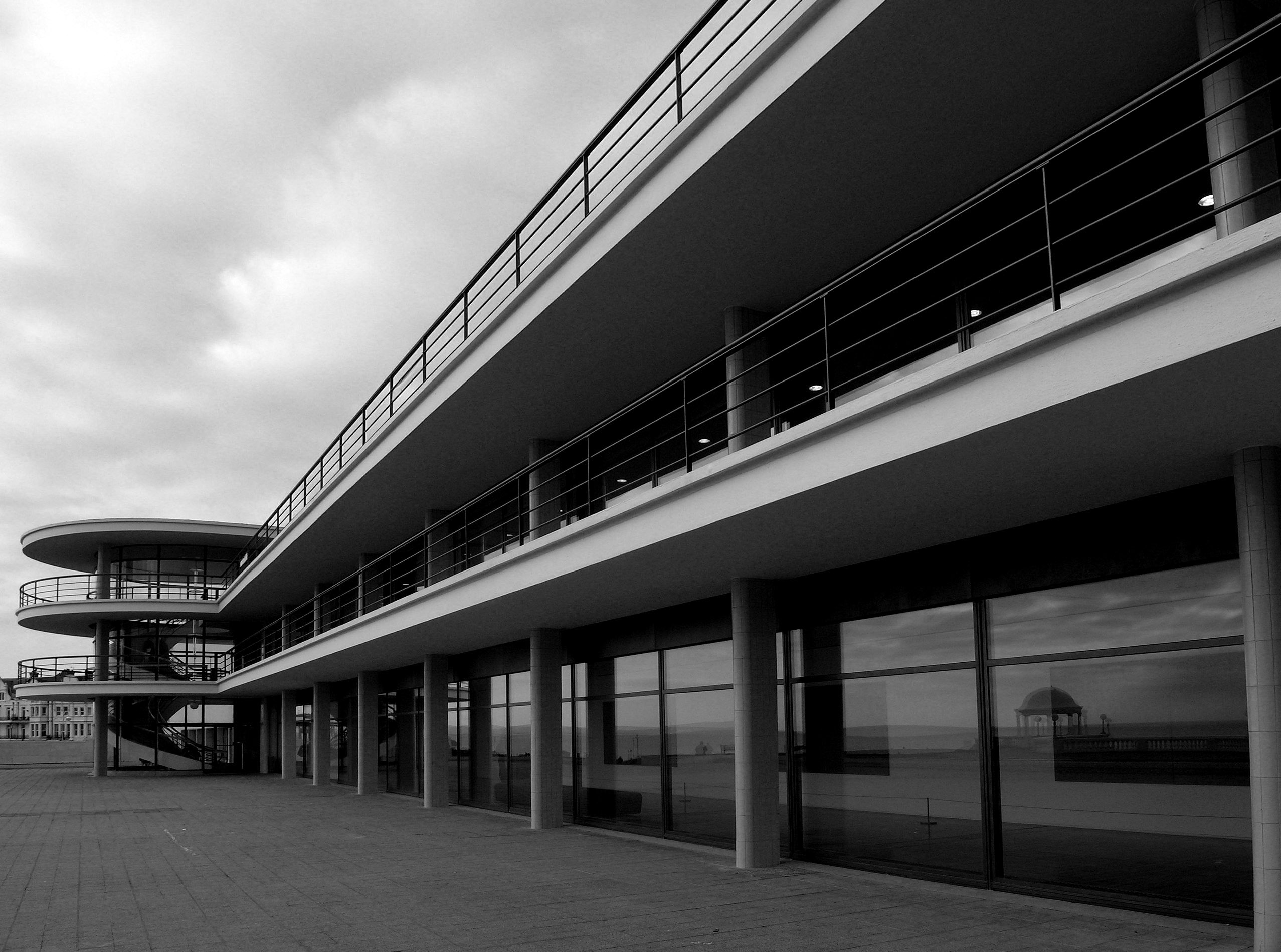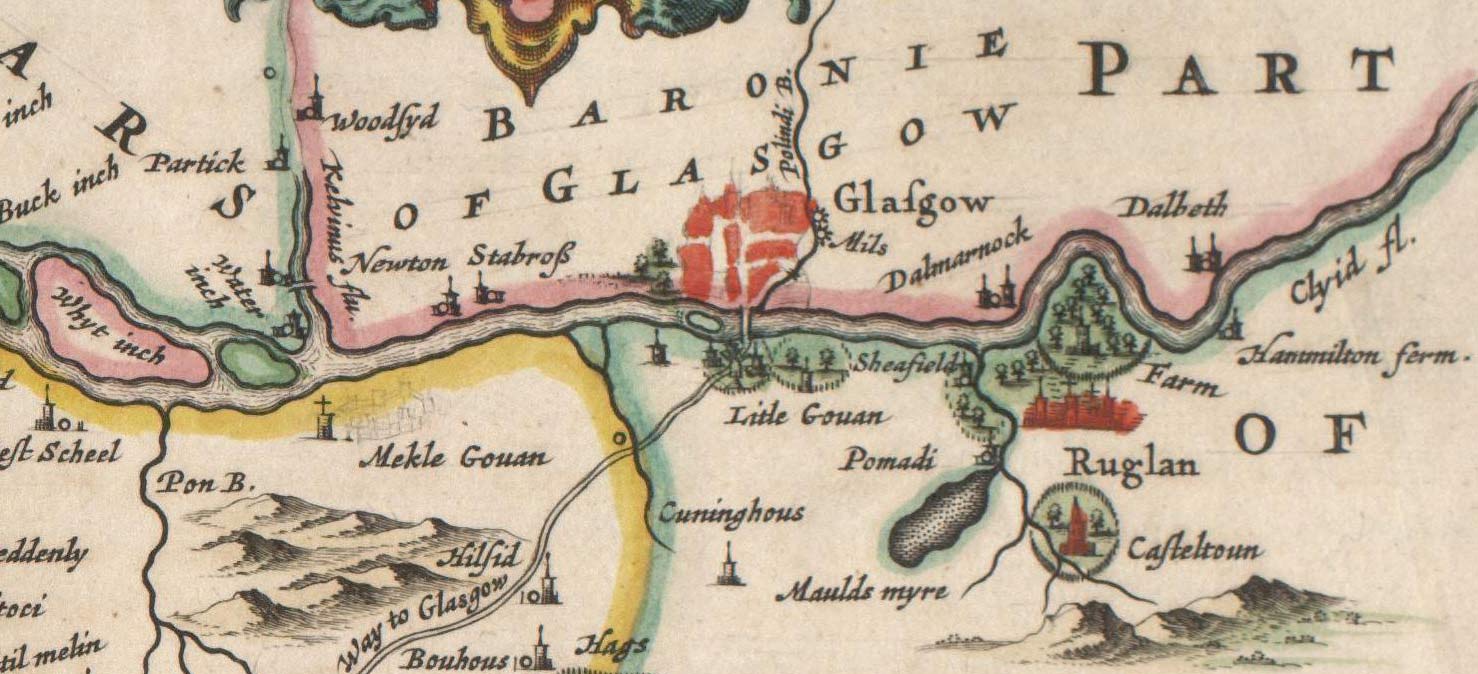|
Ekco
EKCO (from Eric Kirkham Cole Limited) was a British electronics company producing radio and television sets from 1924 until 1960. Expanding into plastic production for its own use, Ekco Plastics produced both radio cases and later domestic plastic products; the plastics company became Lin Pac Mouldings Ltd. Early history The company's founder Eric Kirkham Cole was born on 4 July 1901 at Prittlewell, Southend-on-Sea, Essex, and was educated at Southend Day Technical School, followed by a three-year apprenticeship. Cole and his future wife Muriel Bradshaw started out making radio sets in 1924.Oxford Dictionary of National Biography: Cole, Eric Kirkham by Rowland F. Pocock William Streatfield Verrells, a schoolmaster and freelance journalist from Southend-on-Sea, wrote an article in a local newspaper asking if it was possible to power a radio set from the mains electricity supply rather than batteries. Cole saw a possible business opportunity and set about building his battery ... [...More Info...] [...Related Items...] OR: [Wikipedia] [Google] [Baidu] |
Malmesbury
Malmesbury () is a town and civil parish in north Wiltshire, England, which lies approximately west of Swindon, northeast of Bristol, and north of Chippenham. The older part of the town is on a hilltop which is almost surrounded by the upper waters of the Bristol Avon and one of its tributaries. Once the site of an Iron Age fort, in the early medieval period Malmesbury became the site Malmesbury Abbey, a monastery famed for its learning. It was later home to one of Alfred the Great's fortified burhs for defence against the Vikings. Æthelstan, the first king of all England, was buried in Malmesbury Abbey when he died in 939. As a market town, it became prominent in the Middle Ages as a centre for learning, focused on and around the abbey. In modern times, Malmesbury is best known for its abbey, the bulk of which forms a rare survival of the dissolution of the monasteries. The economy benefits mostly from agriculture, as well as tourism to the Cotswolds, and a Dyson ... [...More Info...] [...Related Items...] OR: [Wikipedia] [Google] [Baidu] |
Cowbridge House
Cowbridge House, southeast of Malmesbury, Wiltshire, England, was an eighteenth century house that was demolished in 2007. During the Second World War the EKCO company used the house as a shadow factory for the manufacture of radar equipment. The factory continued after the war, producing radio and telecommunications equipment; the company was taken over by Pye TMC and then Philips, and later became part of AT&T. The site was in use as offices until 2004 when the owners, Lucent Technologies Lucent Technologies, Inc. was an American Multinational corporation, multinational telecommunications equipment company headquartered in Murray Hill, New Jersey, Murray Hill, New Jersey. It was established on September 30, 1996, through the dives ..., moved their operations to Swindon. Subsequently the site was redeveloped for housing. References External links Cowbridge Houseat the National Archives Former houses in Wiltshire Buildings and structures completed in the 18th ce ... [...More Info...] [...Related Items...] OR: [Wikipedia] [Google] [Baidu] |
Prittlewell
Prittlewell is an inner city area of Southend-on-Sea in the City of Southend-on-Sea, in the ceremonial county of Essex, England. Historically, Prittlewell is the original settlement of the city, Southend being the ''south end'' of Prittlewell. The village of Prittlewell was originally centered at the joining of three main roads, East Street, West Street, and North Street, which was extended south in the 19th century and renamed Victoria Avenue. The principal administrative buildings in Southend are located along Victoria Avenue, although Prittlewell is served by Prittlewell railway station. History Prehistoric People first settled by the Prittle Brook at least 10,000 years ago in the late Stone Age. Little appears to have affected life in Prittlewell as its population gradually evolved from their original character as hunter-gatherers to a more settled existence during the Bronze and Iron Ages. Roman The Roman occupation began to influence the area with the construction ... [...More Info...] [...Related Items...] OR: [Wikipedia] [Google] [Baidu] |
Southend-on-Sea
Southend-on-Sea (), commonly referred to as Southend (), is a coastal city and unitary authorities of England, unitary authority area with Borough status in the United Kingdom, borough status in southeastern Essex, England. It lies on the north side of the Thames Estuary, east of central London. It is bordered to the north by Rochford (district), Rochford and to the west by Castle Point. It is home to the longest pleasure pier in the world, Southend Pier. London Southend Airport is located north of the city centre. Southend-on-Sea originally consisted of a few poor fishermen's huts and farms at the southern end of the village of Prittlewell. In the 1790s, the first buildings around what was to become the High Street of Southend were completed. In the 19th century, Southend's status of a seaside resort grew after a visit from Princess Caroline of Brunswick, and Southend Pier was constructed. From the 1960s onwards, the city declined as a holiday destination. Southend redeveloped ... [...More Info...] [...Related Items...] OR: [Wikipedia] [Google] [Baidu] |
Scophony
Scophony was a sophisticated mechanical television system developed in Britain by Scophony Limited. A black and white image was produced by an early form of acousto-optic modulation of a bright light using a piezoelectric crystal and water or other transparent liquid column. Principle of operation The light modulator worked as follows. Crystal vibrations at one end of a horizontal water column would cause waves to propagate through the water. The light was passed through this column from the side across the waves as they propagated through the column, via separate horizontal and vertical orientated cylindrical lenses. The vibrations through the water would act as a diffraction grating, the higher the amplitude, the more that the light passing through would be diffracted. The light passed through the water column was then horizontally focussed onto either a slit or narrow optical block, depending on whether positive or negative modulation of the water column was used. The amount ... [...More Info...] [...Related Items...] OR: [Wikipedia] [Google] [Baidu] |
Wells Coates
Wells Wintemute Coates OBE (December 17, 1895 – June 17, 1958) was an architect, designer and writer. He was, for most of his life, an expatriate Canadian who is best known for his work in England, the most notable of which is the Modernist block of flats known as the Isokon building in Hampstead, London. Early years The oldest of six children, Wells Coates was born in Tokyo, Japan on December 17, 1895 to Methodist missionaries Sarah Agnes Wintemute Coates (1864–1945) and Harper Havelock Coates (1865–1934). The young man's desire to be an architect was inspired by his mother, who had herself studied architecture under Louis Sullivan and planned one of the first missionary schools in Japan. Coates spent his youth in the Far East, and voyaged around the world with his father in 1913. He served in World War I, first as a gunner and later as a pilot with the Royal Air Force. He attended the University of British Columbia where he obtained a BA degree in May 1920 and a BSc d ... [...More Info...] [...Related Items...] OR: [Wikipedia] [Google] [Baidu] |
Serge Chermayeff
Serge Ivan Chermayeff (born Sergei Ivanovich Issakovich; russian: link=no, Сергей Ива́нович Иссако́вич; 8 October 1900 – 8 May 1996) was a Russian-born British architect, industrial designer, writer, and co-founder of several architectural societies, including the American Society of Planners and Architects. Early life He was born into a wealthy Jewish family in Grozny, Russian Empire (today in the Chechen Republic in the Russian Federation), but moved to England at an early age where he received his education at Peterborough Lodge Preparatory School (1910-1913), the Royal Drawing Society School (1910–1913) and Harrow School (1914–1917). Continuing education and early career From 1922 to 1925, he received training at various schools in Germany, Austria, France and the Netherlands. During this period, he supported himself as a journalist for the Amalgamated Press (1918–23) before becoming chief designer (1924–27) at E. Williams, a de ... [...More Info...] [...Related Items...] OR: [Wikipedia] [Google] [Baidu] |
Rutherglen
Rutherglen (, sco, Ruglen, gd, An Ruadh-Ghleann) is a town in South Lanarkshire, Scotland, immediately south-east of the city of Glasgow, from its centre and directly south of the River Clyde. Having existed as a Lanarkshire burgh in its own right for more than 800 years, in 1975 Rutherglen lost its own local council and administratively became a component of the City of Glasgow District within the Strathclyde region (along with neighbouring Cambuslang). In 1996 the towns were reallocated to the South Lanarkshire council area.From a pawnbrokers to Parliament - Tommy McAvoy looks back on a career that took him to the House of Lords Marc McLean, Daily Record, 11 September 2018. Retrieved 1 January ... [...More Info...] [...Related Items...] OR: [Wikipedia] [Google] [Baidu] |
Aston Clinton House
Aston Clinton House (also known as Green Park though referred to as simply Aston Clinton by the Rothschild family) was a large mansion to the south-east of the village of Aston Clinton in Buckinghamshire, England. History Rothschild period In 1851, Anthony Nathan de Rothschild bought the estate from a banker from Aylesbury. By 1853, he had completed the modernisation of Aston Clinton House and extensive estates in the area, with the help of the architect George Henry Stokes and the builder George Myers. From 1864 to 1877, the architect George Devey the cottages and the park gates (he later transformed another Rothschild property, Ascott House). Old photographs of the house show a sprawling neo-Georgian/ Italianate house with verandahs and a large porte-cochère. Many workers' cottages were built, and two schools and a village hall set up under Rothschild patronage. On the death of Lady Louise de Rothschild in 1910, the house was bequeathed to her two daughters, Con ... [...More Info...] [...Related Items...] OR: [Wikipedia] [Google] [Baidu] |
R1155 Receiver And T1154 Transmitter At RAF Digby
The R1155 was a British communications receiver, commonly used in aircraft along with its associated T1154 transmitter. It was used extensively by the Royal Air Force during World War II, mainly in larger aircraft such as the Avro Lancaster, Handley Page Halifax, Vickers Wellington and Short Sunderland. Some were also used in vehicles and air-sea rescue launches. The R1155 and T1154 sets were manufactured by several British radio manufacturers, including EKCO, Marconi, Plessey, and EMI EMI Group Limited (originally an initialism for Electric and Musical Industries, also referred to as EMI Records Ltd. or simply EMI) was a British transnational conglomerate founded in March 1931 in London. At the time of its break-up in 2012, .... Ekco, who manufactured the R1155 and T1154 at its Aylesbury shadow factory, carried out extensive development work on both units before putting them into production, significantly improving on the original Marconi design. Large numbers of war su ... [...More Info...] [...Related Items...] OR: [Wikipedia] [Google] [Baidu] |








